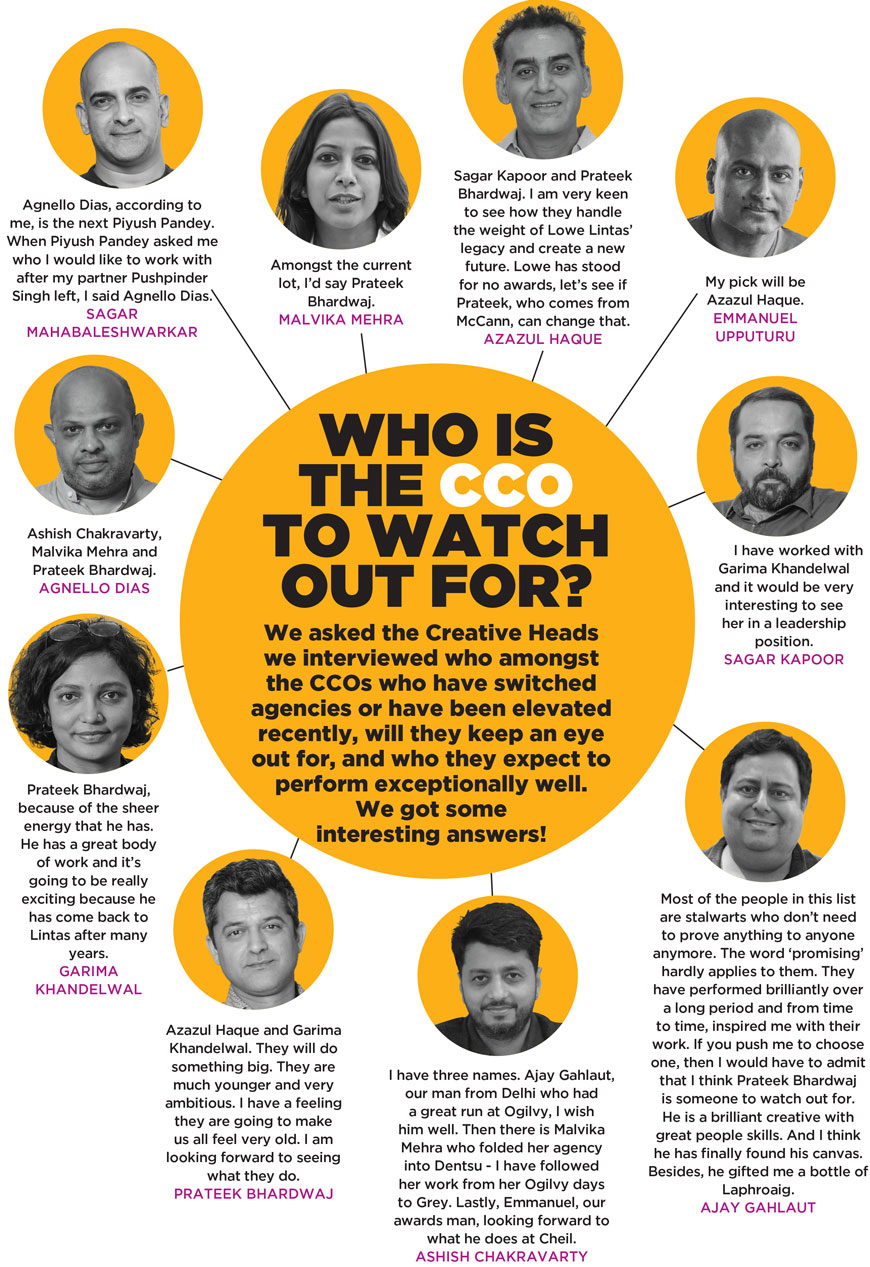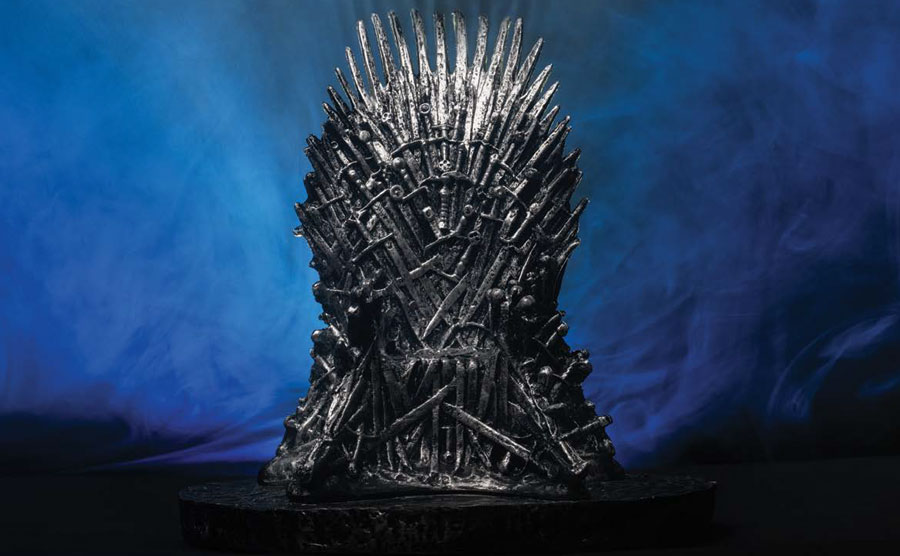Meanwhile, Agnello Dias, one of the most celebrated creative minds in India, who has founded and taken Taproot Dentsu to new heights, assumed a larger role at the Group as the Creative Chairman of the entire Dentsu Aegis Network in India. Erstwhile Publicis CCO Bobby Pawar became Chairman and CCO of the Havas Group, a newly created designation, while Malvika Mehra gave her start-up Tomorrow Creative Lab a new lease of life at Dentsu, joining as the CCO of Dentsu India. Another adman Ashish Chakravarty moved back to McCann Worldgroup from Contract for his third innings at the agency, this time as Executive Director and Head of Creative.
On the other hand, we have some first-time CCOs - Azazul Haque and Garima Khandelwal at Mullen Lintas and Prateek Bhardwaj and Sagar Kapoor at Lowe Lintas. All of them have taken up new roles and newer challenges in an industry that is already riddled with problems like pressures of attracting and retaining good creative talent, low remuneration, acute fragmentation of the media landscape, etc. We attempt to find out how these new leaders are tackling these challenges, what they bring to the table and who amongst them will steer their agencies to the top position.
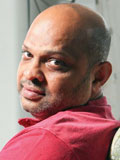 AGNELLO DIAS
AGNELLO DIASCreative Chairman, Dentsu Aegis Network (DAN) India
‘THERE’S A BIG DIFFERENCE BETWEEN AN ADVERTISEMENT & ADVERTISING’
One of the most experienced creative leaders in the country has dubbed him ‘the next Piyush Pandey’ and Agnello Dias has earned every bit of the respect he gets in the industry today. He brought home India’s first Grand Prix at the Cannes Lions International Festival of Creativity, founded Taproot and took it to new heights as Taproot Dentsu, and is now working his magic on the Dentsu Aegis Network with his recent elevation as Creative Chairman of the Group.
Q] For the first time, DAN has the role of a Creative Chairman… what opportunities does that present?
For someone who learnt the ropes of creative communication in the pre-Internet era, it presents an opportunity to pull out from the micro details of creative execution to a macro view of the various directions in which the new forms of creative expression seem to be heading. While the basic languages of creativity - the emotion in a song, the drama of a photograph, the power in a piece of writing, the visceral effect of an expression, the infectiousness of dance - stay unchallenged, the opportunities to combine and package these in newer outreach formats are fascinating.
Q] What is your goal as the Creative Chairman of DAN…. What are the biggest challenges you face?
My role is to work with creative and strategic resources across the various organisations in the DAN network in order to apply some of the methods of conventional creativity to their processes. But it is largely a behind-the-scenes mandate, to interact with people in the network who feel the need to cross-pollinate. My biggest challenge seems to be understanding the pulls and pushes of various sectors as some are far removed from what I’m used to.
Q] How much time do you give to your baby, Taproot now that you have a much larger role in the Group?
Taproot Dentsu is now a robust agency that’s long achieved critical mass with some very capable people heading key departments. Paddy now leads a dynamic creative team headed by Pallavi Chakravarti in Bombay and Titus Upputuru in Delhi, Shashank Lanjekar and Anand Murthy are fronting strategy in Bombay and Delhi respectively while Ayesha Ghosh and Harjot Singh lead the business front in the two cities. And then there’s Umesh Shrikhande, our wise CEO, who points everyone in the right direction. I am and will always be available for Taproot Dentsu should they need me since they are an important component of DAN and thereby of my mandate.
Q] In today’s day and age… what is more important, awards or validation on social media for the ads?
Awards were ultimately a means of getting more business and earning more revenues for the agency. Awards get the agency media coverage. And PR is our surrogate corporate advertising since agencies rarely do corporate campaigns for themselves. That spotlight reached the marketing community and got the agency invited to more businesses. It was a simple matrix. But today, some things have changed. Firstly, the media coverage for awards seems to be petering out both in quantity and intensity. Secondly, there are so many award shows and so many heavy metals given out that almost every agency in India has won something, so that is no longer a differentiator. Lastly, awards get as much validation on social media as do ads.
I believe agencies that have long partnerships with a brand on its journey through thick and thin, against all sorts of market forces are the most important relationships. Else we are just advertisement makers not advertising practitioners. Nothing wrong with that, but there is a difference between an advertisement and advertising.
Q] How have the challenges of CCOs changed over time?
What is your approach to solving them? The big change is that CCOs now need to have strong client interaction skills. They need to be the face of the agency. As for me, I just took it as it came and tried to copy the best performing CCOs around me as well as I could!
 PRATEEK BHARDWAJ
PRATEEK BHARDWAJCCO, Lowe Lintas
‘AWARD SHOWS ARE MOVING TOWARDS THE LINTAS SCHOOL OF THOUGHT’
It has always been a task to get Prateek Bhardwaj to pose for pictures or do a video interview, but when we finally managed to get him in front of the camera, he was a natural, just as he is a natural at cracking big campaigns such as Nescafé’s stammering comedian and RJ Rishi, Ministry of Public Health, Afghanistan (Immunity Charm) and Incredible India, amongst others. And to think, he is only getting started as the CCO of Lowe Lintas!
Q] You are heading an agency which was creatively led by legends like Alyque Padamsee, Balki and more recently Arun Iyer. You are stepping into very big shoes… is there a lot of pressure on you?
Yes, of course, there is pressure. But I also see real privilege, considering that great people have been associated with this agency. I am not taking the pressure of stepping into their shoes but I am fully aware of the role and the responsibilities it comes with, and the legacy of this company.
Q] You spent five years at McCann Worlgroup; so why did you move to Lowe Lintas, an agency which, unlike McCann, hasn’t been entering awards? And who will have to change, Prateek or Lowe Lintas?
The chemistry seemed to be right. The vision seemed to be right. So, it was quite easy to join Lowe Lintas. As far as awards are concerned, over the years, award shows have also evolved, they are moving out of scams, rewarding work which is more effective, more strategic. Basically, I would say they are moving towards the Lintas school of thought. So perhaps we will also start entering awards if we feel comfortable with it, who knows? After all, the kind of work that is awarded today is much more in line with the kind of work Lintas has always believed in. But I am not thinking about awards; in fact, I never did. It just happened that over the last few years, there was a lot of work which could be entered in awards and yes, McCann Worldgroup has a system that is awards-oriented. So, naturally you fit into that. But we don’t create work like Immunity Charm to enter awards. The work should be good, the rest will happen.
Q] What kind of challenges does the new wave of CCOs face when compared to what your seniors faced at one point of time?
The challenge is that we need to deal with different kinds of resources now, like designers, content writers, coders, tech guys, social media experts, etc., and we don’t just have to get them in, but also figure out how to deploy them and retain them. That is the fundamental challenge for all of us. What clients are demanding today goes beyond the standard TVCs and Print ads; in fact the Print campaigns are hardly happening now. We need a lot more in terms of talent, that’s the big challenge we’ll face over the next few years.
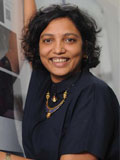 GARIMA KHANDELWAL
GARIMA KHANDELWALCCO, Mullen Lintas
‘NO MATTER HOW BRILLIANT THE WORK, ITS SHELF LIFE IS THREE DAYS’
She has the enthusiasm and smile of a five-year-old, and is one of the most down-to-earth creative leaders I have met. This is Garima Khandelwal’s first shot at leadership as the CCO of Mullen Lintas and she seems determined to do well. After working on some iconic campaigns like AvengersBrotherhood, Motilal Oswal- Experts, etc., she is now leading the agency of which she was a founding member.
Q] You were part of the founding team at Mullen Lintas four years ago and now you are heading creative. How are you approaching this role?
From being part of the founding team and now being part of the leadership team, I understand there is a change, but for me it’s all about the process. Technically it’s the same brand, the same clients, so it’s an easy transition that way, but yes, it feels like a big responsibility.
Q] As a CCO, what is the biggest challenge you face?
See, nowadays however brilliant the work might be, it has a shelf life of two-three days. So the biggest challenge is the speed at which newer ideas need to be breaking ground, just one, two, three or five pieces of work in a year is not going to cut it because things are old in just three days. Secondly, each brand needs so much more involvement now because there is Digital, Print, Film, etc. You have to be firing on all cylinders all the time because your brand needs to be refreshed constantly.
Q] Azazul Haque mentioned that Amer Jaleel was very firm on having two CCOs of the same temperament; did you have any say in picking your partner CCO?
Not a say, so to speak, but Amer did seek my opinion. He had a couple of people in mind, and he would always ask me whether this person would be better or that one and then I would meet that person. So, I met Azazul, and instantly felt like it was the right match. I had only one meeting with him and we talked a lot. In fact, I met Azazul quite late into the process. The conversation had already got through because we were running out of time, and Amer needed to announce a partner for me. That’s when I met him and thankfully, I liked him. I had not actually had a partner for a while, I only had a boss for a partner. So it was a nice change.
Q] So how is it working together, who takes the final call and who is the critic?
It’s Azazul’s fourth week here and we have been pitching constantly. And he is also getting visibility on what accounts we have. Right now, it is logical for us to work together very closely so that he gets a sense of all the work we do here. Then we will see how we split the brands.
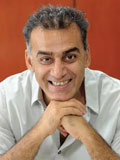 AZAZUL HAQUE
AZAZUL HAQUECCO, Mullen Lintas
‘IN ADVERTISING, ONE NEEDS TO BE KIDDISH FOREVER’
Don’t let Azazul Haque’s Facebook posts of colourful socks and selfies while travelling for work fool you into thinking he doesn’t take his work seriously… because this man is more determined to take his agency to the top than anyone I have known in the advertising world. In the very first week after he joined Mullen Lintas as CCO, Azazul managed to win the Honor mobile phone account for his agency. Well, we simply can’t wait to see how he adds colour to Mullen Lintas.
Q] You achieved your biggest goal of becoming a CCO before turning 40; so what next?
Yes, it is a kiddish thing to have such milestones but I think in advertising, one needs to be kiddish forever. You can’t let that child sleep inside. The day you become a day old in advertising, you are done. You have to be feeling the moment, do what the youth is doing. So, I felt as excited as I would have felt when I won my first medal in school. I had dreamt of this during my last stint at Contract in Delhi and it wasn’t just to prove a point to myself, but to change certain things in advertising like no scams, better salaries for creative people, etc., and to implement it, I had to reach a certain position where my voice would be taken seriously. Also, whenever I saw CCOs, I wondered why do you have to age to be at this post? I just wanted the younger lot to be a lot more optimistic about this very rocking industry called advertising. And believe me, after CCO doesn’t come retirement.
Q] You appear very casual, be it the umpteen selfies of your socks you put up on Facebook or the funky pajamas you wear to work. Don’t you fear not being taken seriously?
When I am having a conversation on a certain subject which requires my expertise, be it with my client or my team, I have to sound like an expert. At that point of time, the conversation is serious, because it is work. Moments other than that shouldn’t be serious. Creating an aura around you which is not truly you, affects your work. Advertising is the only job which allows you to wear this colourful pant and enter a meeting where hundreds of crores are being discussed. When I worked for Ogilvy, I would wear the same pants and enter a boardroom and yet the Amazon team would listen to me more carefully than anyone else. On social media, 50% of the people following me are my juniors. Back when we were young, we didn’t have a Facebook to see what a Balki or Piyush Pandey did in their free time, and we always wanted to know what they did when they were not in that boardroom. Call it my way of connecting with my juniors.
Q] What is your biggest challenge as a CCO?
The biggest challenge is how to bring the mediums together, and not let one become bigger than the other. The different departments cannot work in silos and blurring those boundaries is important for most CCOs today.
Q] How different is Mullen Lintas from Ogilvy where you spent five years?
Ogilvy is a ship, which goes slow and steady and Mullen Lintas is a speedboat, so it reaches faster. When there is a large tide, Ogilvy will remain unaffected, but it could result in a bump for Mullen Lintas; but such bumps are fun.
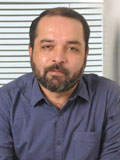 SAGAR KAPOOR
SAGAR KAPOORCCO, Lowe Lintas
‘IN 17 YEARS, I DIDN’T FEEL THE NEED TO MOVE OUT OF LINTAS’
How often have we seen a creative leader being absolutely loyal to the agency he started work with as a fresher? Well, for Sagar Kapoor, his association with Lowe Lintas is 17 years old and still rocking. No doubt the agency has rewarded his talent and elevated him to the position of CCO of Lowe Lintas, which stalwarts like Alyque Padamsee, Balki and Arun Iyer have held in the past.
Q] You have been with Lowe Lintas for 17 years. Did you ever dream of leading it?
For me, there was no box to tick as such neither did I ever dream of becoming the CCO of Lowe Lintas. The only thing I knew about the agency was that I was in it for the long run. I have only taken the opportunities the agency has given me, and those opportunities resulted in growth for me. The agency always had a plan for me. Probably I was among the fortunate ones.
Q] Alyque Padamsee, Balki, Arun Iyer have each shaped the culture at Lowe Lintas, what will be your contribution to the agency? What will Sagar Kapoor be known for?
We should find out in the coming year or two, hopefully! I don’t think Alyque Padamsee, Balki or Arun Iyer ever wanted to leave behind a legacy. They were just great at knowing the pulse of communication at that point in time. Balki was known for instinctively understanding what will work with people and how they will react to things. The three of them built the culture at Lowe Lintas, but they were facing a different set of pressures while I would face a totally different set of pressures. But, in my head strangely, it works to an advantage saying I belong to a place where these people have laid down the culture. My job is to churn out work which will keep that culture alive.
Q] In an age where retaining talent is hard, you have spent 17 years with one agency. Did you never feel the need to step out?
At a very early stage, I fell in love with the culture of Lowe Lintas, the place and the kind of people that I was working with, so there was no dire need to look outside. Of course, in a career of 17 years, in one agency you feel at some point, for the sake of change should I be changing? But, whenever a thought like this occurs, the system has always given me whatever I needed at that point to stay inside the system. Also, by nature, I am not the kind of person to seek change unless I really need it. So, it never actually occurred to me.
Q] What are the challenges of the new age CCOs today?
Work-wise, we have gradually grown from a not-so digital age to a healthy digital age today. It was not an overnight change and we know in what direction we are going. What is challenging as per me is to retain and procure new talent. Today, we do more work than we were used to doing five years ago. We have to also keep in mind that in changing times, what is the amount of control we can exercise on people. They need to have their freedom to breathe and to have their own voice. You can’t have one voice talking for a team of 40 people.
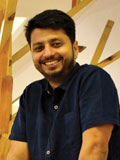 ASHISH CHAKRAVARTY
ASHISH CHAKRAVARTYExecutive Director and Head of Creative-India, McCann WorldGroup
‘FOR ME, IT IS NOT A BATMAN STORY, IT’S AN AVENGERS STORY’
He is not superstitious, but strongly believes in the magic of a certain white board which always finds a place in his office. He claims that is the only thing he took with him to his new office at McCann Worldgroup. Well, that and his love for Contract Advertising, an agency he has nurtured for six years. It is his third stint at McCann and we are sure that the magic of the board, on which Ashish writes his award-winning ideas, will continue to work.
Q] In the past 15 years, you have had two stints at McCann and two at Contract. What draws you to these two agencies?
Strangely, the culture I created at Contract was also almost like a mini McCann. I used to tell Prasoon ‘Sir, I feel like I jumped from a moving train, but am still running at its speed’. But, that was necessary because when I joined Contract, it had just two big businesses in Delhi and a nine-member creative team. By 2017, we had 60 people in creative which was bigger than Lowe. Talking about McCann, I have always had fantastic chemistry with Prasoon Joshi, and we stayed in touch even after I quit McCann.
Q] Do you miss being the last word on Creative? Unlike Contract, where you were the CCO, here you are reporting to Prasoon Joshi…
For me, it is not a Batman story, it’s an Avengers story. I have never been about control. We are all running together, it’s about contributing and the eye is on the final goal. So, it’s an illusion that you are controlling or not controlling. For example, at Contract, the Delhi office was completely run by Mayur Hola and the Mumbai office by Vineet Mahajan and Kapil Mishra. They would come to me whenever they required help. Obviously, the scale of operations was much smaller. Delhi McCann alone is bigger than Contract. But I have never been the controlling type, that’s not my thing even when I was technically the last word on it at Contract.
Q] What are the challenges of the new age CCOs?
The challenges of the CCO depends on the size of the company. If you are a small or mid-sized agency, new business is paramount, because your survival, your ability to stay new and your ability to attract talent, depends on your ability to attract newer clients. Organic growth is not as important because you do not actually have very large clients. But for an agency like McCann or JWT, organic growth is paramount. They already have a lot of very big clients who must be kept happy, and if they are happy, the agency can grow more and do more. The similarity is, any agency will have to do a certain kind of work that fetches awards and gets them noticed.
Q] McCann Delhi has topped the WARC Effective 100 list this year, and the agency has consistently done well over the years at awards. Is there a lot of pressure on you to keep the momentum going?
It’s a global company, so there will always be pressure, but with awards, you also have to know that there will be good years and there will be bad years. We are not working for awards. Awards happen as a result of what you have done, and especially Effies. So, I am hopeful that the run continues, of course, and I am able to claim my little share of it, but you have to be pragmatic at the end of the day.
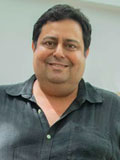 AJAY GAHLAUT
AJAY GAHLAUTCCO & MD, Publicis Worldwide India
‘THE NEW WAVE WILL MAKE AGENCIES FIND THEIR FEET ONCE AGAIN’
He is the brain behind the ‘Men will be Men’ ads and has several other legendary campaigns to his name. Last year, around November, news about this Ogilvy strongman leaving the advertising world shocked everyone, so much so that all the top creative leaders across agencies came together in the capital to give him a farewell. But the advertising industry was not to lose this gem so soon. Months later, Ajay Gahlaut moved to Mumbai and assumed the role of CCO and MD of Publicis Worldwide India.
Q] You have held a very senior position at Ogilvy, but this is the first time that you are leading the creative business at an agency. What is your priority going to be as CCO?
To basically try and raise the bar on the creative product, create a culture of creativity, and a nimbler system to leverage that. Things are changing rapidly in the advertising industry. Everyone is running to keep pace with the changes. Publicis is a great place to try and take the work into the new age.
Q] Are you biased towards traditional media? Or would you say that Digital is a better way of brand-building?
In India, the belief still is that Television is the most powerful way of brand-building, which is rubbish. As advertisers, we have to move where the consumer is moving. And if the consumer is on Snapchat or Instagram, our job is to find interesting, non-intrusive and engaging ways to talk to him/ her on those platforms. If you can do something interesting on social media, or on the new digital platforms, it only adds to the excitement as these new channels are interactive. We are sitting on the cusp of something big and revolutionary. What happened when television advertising came into the picture? Suddenly, ad agencies and creative people had to find a three-dimensional way of using moving pictures, dialogues, change the way they were thinking, right? So, it expanded your capabilities. Earlier, it was all about a nice piece of writing, which also had its joy. I still enjoy that. But, I know it’s not as relevant now. So I have switched to writing on Facebook. You have to find your way to talk to the consumer on new digital platforms. What I like about Publicis is that the whole group is very focused towards this third wave of advertising.
Q] What is the biggest challenge that CCOs of today face?
Talent is the biggest challenge, because now even technology companies like Facebook, Google, Netflix, etc., are hiring creative talent. Uber has its own creative team. New age start-ups have their in-house agencies. So, there is a lot of competition for great talent. And it’s a challenge because agencies are not as remunerative as they used to be and there is a squeeze on all of us, but I still believe that advertising agencies are the most fun places for creative people. We are the hidden persuaders, we get someone to do something they don’t necessarily want to do. But, I think the new wave will come again and agencies will find their feet. I think clients will also come to the realization that not everything can be science. Someone wise had said, “The most difficult relationship is between clients and agencies because it’s a bunch of people who want to be scientists talking to a bunch of people who want to be artists.” So there are clashes. I think clients will realize that there is a great deal of value gained from good agencies and happy days will be here again.
 MALVIKA MEHRA
MALVIKA MEHRACCO, Dentsu India
‘BY JOINING DENTSU, I GOT THE BEST OF BOTH WORLDS’
She is a two-time Cannes Gold Lion and D&AD Pencil winner, and has more than two decades of experience across advertising agencies such as Ogilvy and Grey. More recently, Malvika Mehra was running her own independent design venture, Tomorrow Creative Lab, before she joined Dentsu India as the Chief Creative Officer.
Q] Why did you decide to move to an advertising network like Dentsu after starting your own agency.
I have come with my brand, Tomorrow Creative Lab, along with donning the role of Chief Creative Officer for Dentsu India. The flight’s still headed to the same destination, just that there’s a gate change. It is now via a bigger gate called Dentsu India. Tomorrow continues as the design and innovation unit and is now called Dentsu India Tomorrow Lab. Why Dentsu? Because DAN is truly an integrated network, I’ve already observed this in my first one month here; it’s not just lip service, people across the network of agencies here step in to help each other, and thus grow together.
Q] What excites you the most about your role at Dentsu India?
By joining Dentsu, I actually got the best of both worlds; I get a bigger canvas to work on, there are some great brands here with a lot of potential. Plus, I have the awesome opportunity to continue to be an intrapreneur with the backing of a solid network like DAN.
Q] What are the challenges the CCOs of today face and how do you hope to tackle that?
1. Hiring top class talent - there is either good work on the table or a great attitude. Rarely both.
2. Time - only 24 hours in a day. Today, a Chief Creative Officer dons many hats - Strategy and Business included. There is always lots to do and very little time to do it in. Especially if you are a detail/qualityoriented, deep-dive person like me, the trade-off between depth and width becomes a slight balancing act. It’s tough and I’m still learning.
Q] Having worked in both network agencies and an independent agency, which do you think is more effective in solving a marketer’s problems?
Both are effective. And their methods are not necessarily mutually exclusive. It totally depends on what problem the client is looking at solving. Also, at what scale and speed. Any agency worth its salt today has to have a mindset of both. Big is great, but we must remain sharp and relevant. At least, that’s what our plan for Dentsu India is.
Q] What do you miss the most about being an entrepreneur?
I don’t miss a thing. Like I said earlier, same flight, different gate.
Q] Amongst your peers who have been elevated as CCOs recently, who do you think is the person to watch out for?
They are all great minds and am looking forward to some healthy competition.
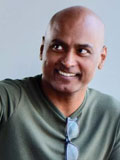 EMMANUEL UPPUTURU
EMMANUEL UPPUTURUCCO, Cheil WW India
‘I FEEL AS IF I HAVE STARTED MY CAREER ALL OVER AGAIN’
A top creative leader referred to him fondly as the ‘Awards Man’ of the advertising world, and he totally lived up to it this year after taking over Cheil India as the Chief Creative Officer. The agency he leads today had one of the best runs at the Abbys this year, clinching metal after metal across categories. A year after quitting ITSA, the agency he started, Emmanuel Upputuru had announced his return in the best possible way.
Q] Why did you take a U-turn after heading out on that entrepreneurial route with ITSA?
ITSA was a lot of fun. But during that phase, I was just thinking that may be the scale is missing. Plus, I was occupied with administration, financing, GST, taxes and all that. Somewhere in the middle of that, I was just questioning myself on whether I was missing out on what gives me more joy - which is pure creative work. That was one of the reasons why I quit.
Q] Why did you pick Cheil, a Samsung subsidiary?
In India as also globally, a lot of clients are attracting creative talent. And I felt like I have been there and done that as far as traditional creative agencies are concerned and there is nothing new for me to learn there. So, I decided to join a corporate company which is into technology rather than FMCG, and I also wanted to be in Gurgaon. Thus Cheil was perfect because we are Samsung’s private marketing agency, and we do almost everything for them. I don’t think I could have got a better opportunity than this.
Q] You arrived with a bang; it was Cheil’s best ever show at Goafest this time…
At the end of the day, an agency’s test is the work it does for its clients, but my role is not just to create work for clients but also to figure out how we deal with our own brand, Cheil. That was one of the reasons why we managed to do what we did at Goafest.
Q] On your LinkedIn profile, you have mentioned that you first survived English copy-writers who would write the Queen’s English with a chip on their shoulders and then those from the cow belt… but now is your time… can you elaborate?
This is not just the same industry which I joined over two decades ago. It does not do the same kind of work, right now we get approvals on the work on WhatsApp. So, the industry has completely changed. Ideas are turned around at breakneck speed; the media has changed and the consumer has changed too. It is a completely different kind of world. When I started, English was the main medium, and then it became Hindi. Today, language is not the medium at all, it is technology. For any medium, you need ideas. What I did in the last five years, including looking at every small aspect of the business, has given me the confidence to deal with this industry in a fresh manner. Thus, I keep telling myself that I have started my career all over again.
Q] What kind of challenges do the new age CCOs face today?
Attracting talent is the biggest challenge.
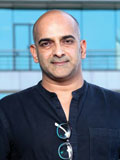 SAGAR MAHABALESHWARKAR
SAGAR MAHABALESHWARKARCCO, Contract Advertising
‘THERE’S BEEN NO STRONG VOICE FROM CONTRACT FOR A WHILE’
Unlike most creative leaders, this industry stalwart calls awards ‘2.5 minutes to glory’ even as we struggle to keep count of the number of metals he has won at Cannes Lions, One Show, Clio, D&AD and the Abbys. “I never took a single trophy home from office. It was also never kept on my table,” says Sagar Mahabaleshwarkar, who has assumed the top creative position at Contract Advertising. He doesn’t mince words when he says, “My KRA is to create an ecosystem which will help us churn out better work and not just win 20 metals at Cannes.” Fair enough.
Q] You have spent most of your advertising years at WPP agencies. What has been the high point for you?
WPP owns 70% of the market, so where could I go? The first 15 years with Ogilvy were a lovely run because at that time, Ogilvy was growing by leaps and bounds in terms of billings, awards and creative reputation. It became the No. 1 agency from the No. 6 agency in that span of time. This was around the time when Ranjan Kapoor came on board and changed the whole brief for the agency to elevate Piyush Pandey as a leader. I joined Ogilvy in 1992 and I could see the agency growing almost by 100% every two years. It started setting the tone for the best creative work in our industry. That journey was the best because some of the best campaigns such as Tata Safari, Amaron Batteries, SBI Life Insurance, etc., came out then. That was definitely the high point.
Q] Contract is considered the poor cousin of Wunderman Thompson (earlier JWT). What do you think?
I think you are talking about how historically Contract got neglected. During the time of Ravi Deshpande, it was one of the best creative boutiques in town. Agencies like Taproot and other smaller agencies took that positioning away from Contract. Sometimes it’s important to get the right kind of people together under one roof to let the magic happen. So, I think may be that didn’t happen for a while for Contract. Also, I think there was no strong voice from Contract.
People feel doing their day-to-day job is good enough, but sometimes profiling yourself in a right way, and telling people what you are doing, what you are up to is equally important. Just winning awards is not the only parameter to say you are creative or not. So, I think Contract missed out on that. But, in the last couple of years after Tarun Rai and Raji Ramaswamy took over, things have been different. In fact, Wunderman Thompson and Contract are actually feeding off each other in terms of brainpower and manpower, to take the game to the next level. Contract has a long-standing relationship with clients like Shopper’s Stop, Asian Paints, Bata, Domino’s, etc. Right now, I am very happy to be part of a big network as well as a small agency.
Q] You have three decades of experience in the creative industry. Over the years, how have the challenges faced by CCOs changed?
At Ogilvy, the No. 1 agency, to hold on to the creative reputation needed a different kind of strategy. For a smaller agency which needs to grow, the challenges are very different. My challenge here at Contract is to create an ecosystem which will help us work in an integrated way. So, I had to work on mindsets of the people which is a very different kind of challenge. But, the good thing is the wonderful set of clients we have, I was pleasantly surprised.
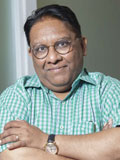 BOBBY PAWAR
BOBBY PAWARCCO and Chairman, Havas Group
‘THE OUTPUT OF HAVAS WILL DO ALL THE TALKING’
Bobby Pawar is one of the seniormost creative leaders on our list and is known for transforming the agencies he leads, be it DDB Mudra or the more recent Publicis. He is equally excited about doing it again at Havas Group, which he has joined as Chairman and CCO.
Q] You recently moved from Publicis, where you spent around 5 years, to Havas…. What excites you the most about your role here?
The time spent at Publicis was very rewarding. We turned the place around and did some of the most talked about campaigns. However, I decided to move because Havas Group presented an opportunity to do it again.
Q] This is the first time that Havas Group has a CCO and not just Havas Creative, just as Rana Barua is the first Group CEO … what kind of opportunities does that present?
The concept of the Havas Village and the ‘Together’ strategy is simple but extremely powerful; the coming together of communications disciplines under one roof to create a different way of working to guarantee an agile, seamless and fully integrated service to clients. Havas Group was one of the first networks to move back into an integrated offering to make a meaningful difference to our clients’ business and brands, be it through communication, content, technology or activation.
Additionally, being a part of Vivendi is truly a gamechanger and unique differentiator for Havas, as we have the opportunity to insert brands into popular culture and find solutions for them that go way beyond what a traditional agency can offer. We have the ability to do that by collaborating with Universal Music Group, one of the largest music companies in the world, Gameloft, the globe’s biggest mobile gaming company, and Daily Motion.
Q] What is more important - awards or validation on social media?
In today’s world, shareability is everything. The Havas Group Meaningful Brands study shows that if over 70% of the brands (globally) that exist were to suddenly disappear, people won’t miss them. In such a scenario, if we don’t focus on creating meaningful relationships between brands and consumers, they will lose relevance.
Q] You are one of the most experienced CCOs in the country today… how have the challenges of CCOs changed over time?
Experience is good, curiosity and the desire to step outside your comfort zone is better. I am always learning, many a times from the youngest members of my team. They are fearless and they question how things have been done. In times of change, you need to transform yourself and your approach before change is thrust upon you.
Q] What is your vision for Havas and immediate goal?
Our output will do all the talking.
Q] You have held the post of a CCO for 12 years now… what would you consider as the high points of your career?
I have been fortunate enough to be given the opportunity to turn around companies starting with what was then the Mudra Group, then Publicis, now Havas Group. Mudra became one of the hottest creative shops under my watch. At Publicis we created the Khali campaign for Gujarat Ambuja, the RanveerAlia campaign for Makemytrip, great work for Nerolac, Nestle, Skoda and many other brands. The output was the result of a culture that was built in both the companies. That’s the one thing I am most proud of.
